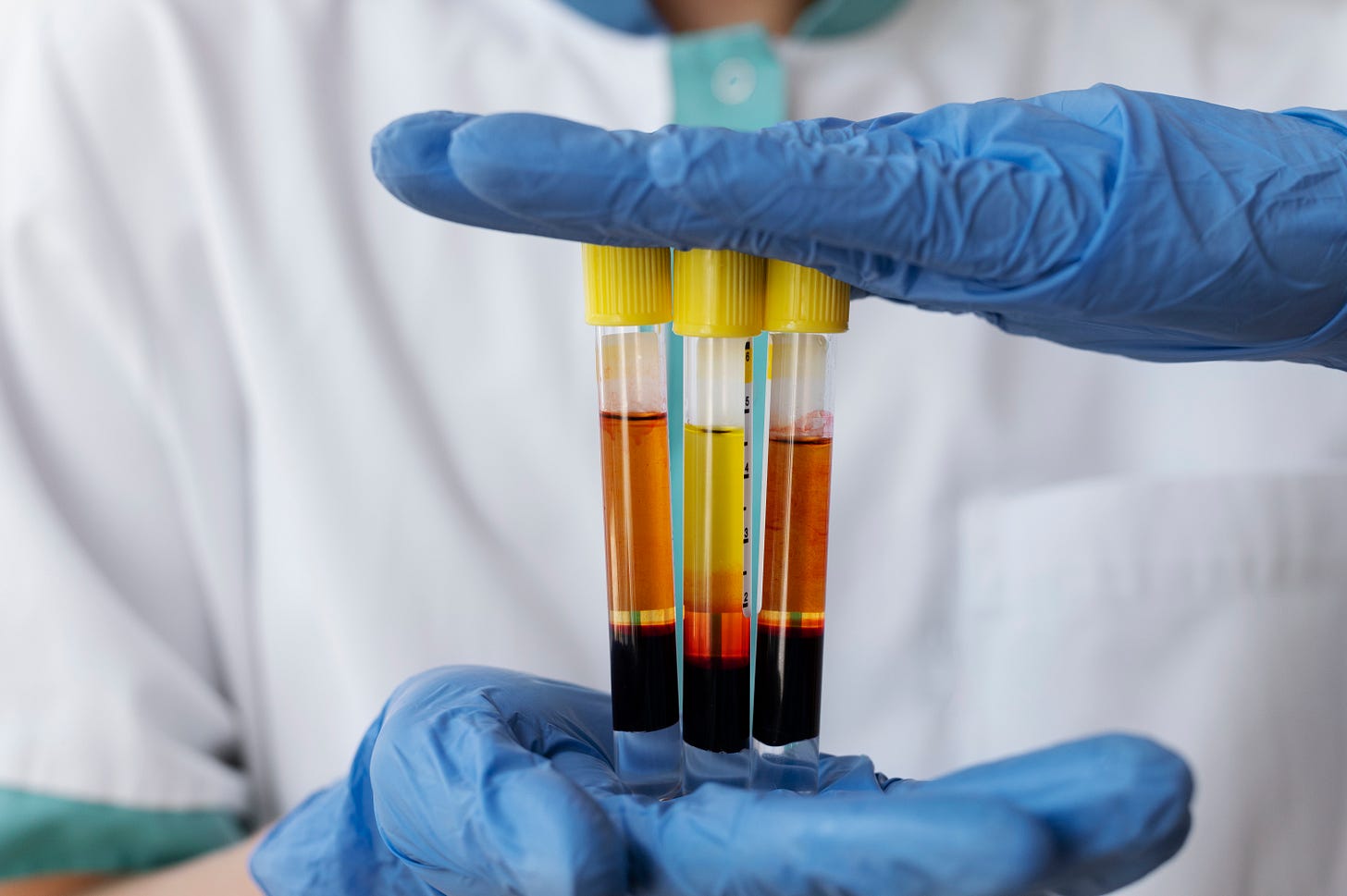Interesting New Basic Science Research
Enhancing endometrial receptivity
Can endometrial receptivity be enhanced with non-autologous human platelet lysate (HPL)? This is what researchers from the CReATe Fertility Centre at the University of Toronto in Canada recently reported in a paper in Human Reproduction.¹ Autologous HLP is now widely used in medicine in many medical specialties; in infertility, often under the name platelet rich plasma (PRP) or “ovarian rejuvenation” (a term we don’t like) in cases of low functional ovarian reserve and as endometrial perfusions either to thicken the endometrium or, as in this study suggested, in attempts to enhance endometrial growth to improve implantation chances. In this study, the investigators, however, used a commercially available, pooled, and cell debris–cleared derivative of PRP that can be used in cell culture.
The study compared in a cross-sectional study 18 patients with alleged repeat implantation failure (RIF) and 5 controls at ages 32-47 years, with the RIF patients representing two sub-groups, one with RIF and thin endometrium and the other with RIF alone. Primary endometrial epithelial cells (EECs) and endometrial stromal cells (ESCs) were isolated, cultured, and, for 48 hours, for RIF patients, EECs were treated either with supplemented 1% HPL, and if ESCs with 10% HPL, while controls were treated with serum-free media (SFM), and cell proliferation was then assessed with a metabolic assay and immunocytochemistry for Ki-67 expression. After 48 hours pooled total RNA was isolated, and the pooled RNA libraries were prepared and underwent sequencing.
The authors reported statistically marginally significant EEC proliferation (P<0.05) in all groups and HPL upregulated 45 genes in EECs and 378 genes in ESCs, while EECs downregulated 30 genes and ESCs 429. The study demonstrated in addition several additional changes in EECs and ESCs, such as increased primary EEC attachment to trophoblast spheroids, and was consistent in RIF patients, independent of endometrial thickness.
So, what are the conclusions? The authors present the results of their study as a mechanistic explanation for the “observed improvements in implantation.” We, frankly, are unaware that such improvements have, indeed, been reported. What has been reported were a small number of very small studies with generally insufficient power to demonstrate anything. And this is also the main problem of this study.
The authors studied only 5 controls and 18 RIF patients and demonstrated statistically very marginal differences between study and control patients at only a P<0.05 level. This means that one or 2 more control patients could have made this observed difference disappear. Moreover, the paper does not even note how RIF was defined, and regular readers of these pages will, of course, be fully aware what a mess the diagnosis of RIF really is, with increasing numbers of experts wondering whether something like RIF really exists.²,³
The authors of this study are to be congratulated on their effort, and they were absolutely correct in noting in their paper under limitations and reasons for caution that “randomized controlled trials are still necessary,” but this sentence has too often become a concluding cliché in insufficient studies to get a publication through peer review. Common sense really mandates that we use limited time and resources to investigate “the mechanics” (as the authors described their work) of a problem only if a problem is really established to exist (and as noted above, RIF is anything but established as a problem).
Moreover, all studies must start with a clear definition of the study and control populations (in this paper, the reader knows nothing about either group). A power analysis must, in advance, determine the number of patients required to determine a real statistical difference between these groups (in this study, very obviously not obtained). We can only hope that this paper will not contribute to the unverified clinical use of PRP and/or HPL in IVF cycles with alleged RIF, like extremely poor studies have unfortunately greatly contributed to the uncontrolled use of intraovarian PRP (and more recently, alleged stem cells). All of these treatments should, in principle, be restricted to studies and, if performed outside of studies, with clear informed consent describing them as experimental.
References
Thu Ngoc Nguyen et al., Hum Reprod 2015; https://doi.org/10.1093/humrep/deaf118. Online, ahead of print.
Gill et al., Hum Reprod 2024; 39(5):974-980
Fraire-Zamora et al., Hum Reprod 2024; 40(3):565-569
The effect of advancing age on the human MII oocyte transcriptome
A recent study by Chinese colleagues from Xi’an in Molecular Human Reproduction reported on the discordant effects of maternal age on the human MII oocyte transcriptome.¹ Considering the very obvious changes in oocytes with advancing female age (as a subject of great interest for the CHR’s investigators who have published several studies on the subject, which have led to significant changes in how the CHR individualizes IVF cycles dependent on patient age).
The paper is too complex to go into technical details in the limited space available here for commentary. We, therefore, will restrict our comments only to one technical observation, which is that—like in the preceding paper—the number of studied subjects (9 humans, 3 mice) is, of course, very small, likely too small for definite conclusions.
But in contrast to the preceding paper, the authors do not overrepresent their findings by claiming statistically doubtful findings in addressing a, may not even exist. Here, the authors asked a crucially important and logical question and offered a very general answer that sounds logical, though, of course, it requires further confirmation.
What the authors concluded is that as women age, their oocytes demonstrate pronounced inter-oocyte heterogeneity in transcription. Moreover, oocyte ageing is a multifactorial process in which “bona fide transcriptomics changes likely play only a restricted role, while proteomic changes play more pronounced roles.” These conclusions have very practical diagnostic and, potentially, therapeutic consequences because diagnostic as well as therapeutic interventions are, of course, much easier at the proteomic than transcriptomic level.
Related, Israeli investigators addressed not mature MII oocytes but immature germinal vesicle stage (GV) oocytes. In other words, their study aimed to assess age-related differences in gene expression of GV oocytes with advancing age.² They did this by comparing GV oocytes donated by (only) 6 patients, 3 younger (16-29 years) and 3 older (38-40 years).
They found 10 significantly expressed genes based on age, 7 downregulated and 3 upregulated in younger vs. older patients. The involved genes affected chromosomal stability, epigenetic regulation, mitochondrial function, immune response, structural integrity, and calcium signaling.
This study, thus, confirmed differences in gene expression between GV oocytes between younger and older patients, but—once again—this is only a very small study of 3 and 3 patients, respectively, and, therefore, does not offer much new insight, except for the fact that these differences are already apparent at the GV stage.
Reference
Zhang et al., Mol Hum Reprod 2025;31(3):gaaf038
Orvieto et al., Reprod Biol Endocrinol 2025;23:111
Can prostaglandin E2 (PGE2) rejuvenate stem cells?
This is what Stanford Medicine at Stanford University just reported:¹ Indeed, it happens to muscle stem cells in a mouse model after only brief exposure to PGE2, which is known to be involved in the body’s natural healing process after exercise or damage. The treatment apparently removes through aging-induced biochemical tags on the DNA of muscle stem cells that accumulate with aging and are passed on to daughter cells and hamper genes involved in muscle self-renewal, cell survival, and muscle cell function.
The article quotes Helen Blau, PhD., the senior author of a paper just published online in Cell Stem Cell,² as saying that in the mouse model, “a single injection of PGE2 shortly after muscle injury caused an increase in muscle mass and strength two weeks later.” Moreover, the memory is apparently heritable, with the resulting improvement in stem cell function being inherited by the progeny of a cell, its cellular “children” and “grandchildren.”

These findings in a mouse model, of course, may have quite some clinical significance for human aging, muscle repair, age-induced, but also drug-induced muscle loss (from weight loss drugs), and sarcopenia.
References
Conger G. Stanford Medicine. June 24, 2025. https://med.stanford.edu/news/all-news/2025/06/muscle-aging.html
Wang et al., Cell Stem Cell 2025;32(7):1154-1169


